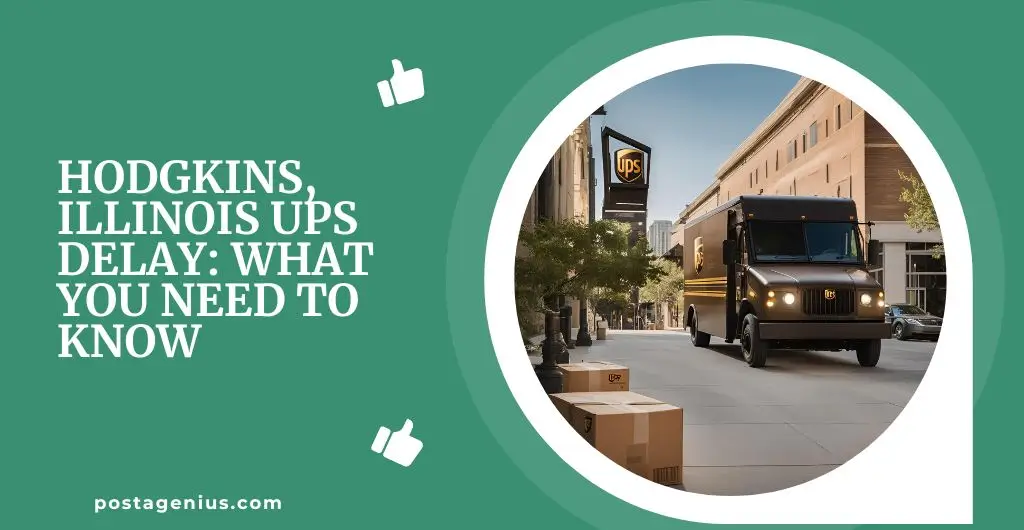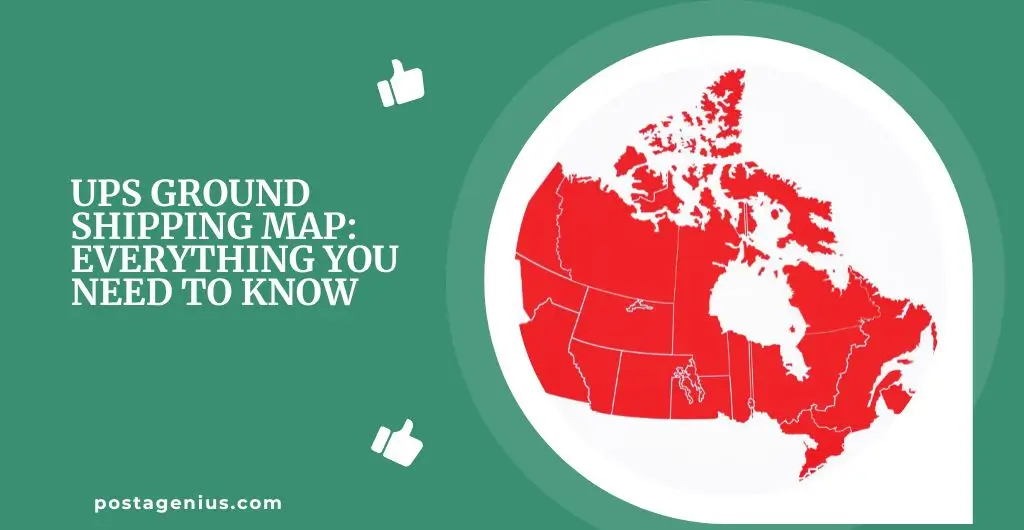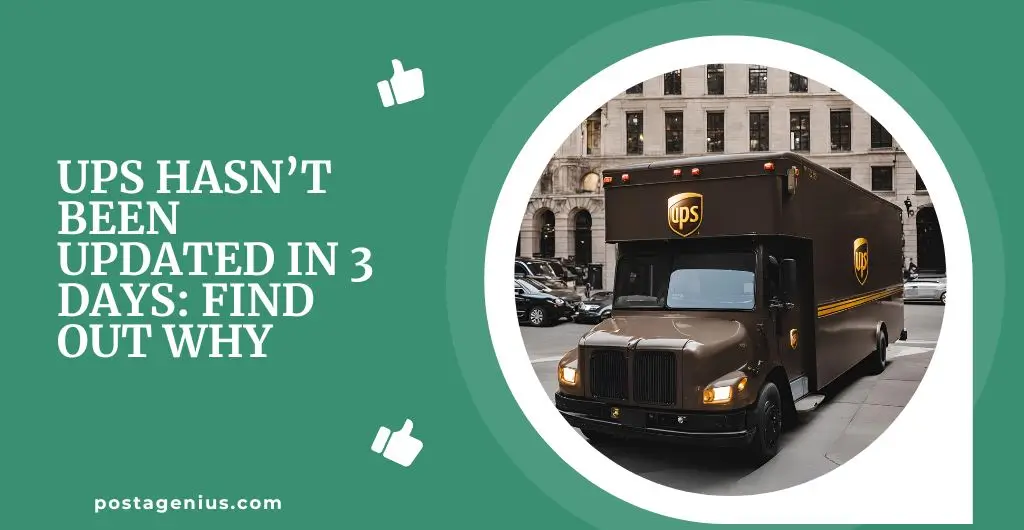What Happens When UPS Loads Your Delivery Vehicle?
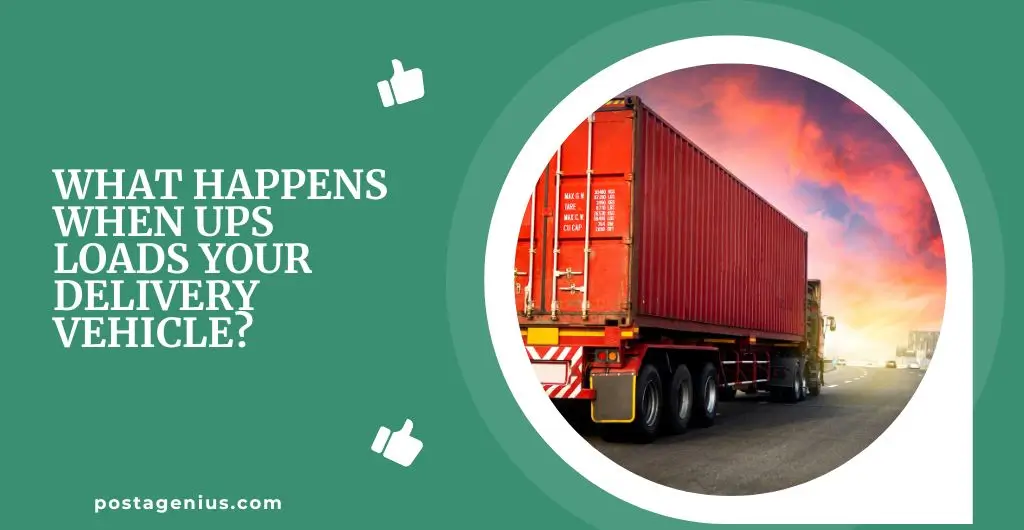
Ever wondered what happens when your UPS package is marked as “Loaded on Delivery Vehicle”? This important step means your package is securely placed in a delivery truck and is on its way to you.
Understanding this status gives you insight into the UPS loading process, which involves carefully organizing and securing packages to maximize space and efficiency.
It highlights the precision and care taken to ensure that your package is protected during transit and arrives at your doorstep safely and on time.
By learning more about what “Loaded on Delivery Vehicle” means, you’ll appreciate the logistics and technology UPS uses to deliver your package swiftly and securely.
Contents
- 1 Detailed Steps of the UPS Loading Process for Loaded On Delivery Vehicle UPS
- 2 5. Final Checks and Departure
- 2.1 Utilizing Technology for Streamlined Loading
- 2.2 Maximizing Space and Capacity on Delivery Vehicles
- 2.3 Ensuring Safety and Security of Packages During Loading
- 2.4 Training and Best Practices for Loading Efficiency
- 2.5 Continuous Improvement and Innovation in Loading Processes
- 2.6 Key Takeaways
- 2.7 Frequently Asked Questions
- 2.7.1 What does “Loaded on Delivery Vehicle” mean?
- 2.7.2 How long does it take for a package to arrive after it is “Loaded on Delivery Vehicle”?
- 2.7.3 Can I track the delivery truck in real-time?
- 2.7.4 What should I do if my package says “Delivered” but I haven’t received it?
- 2.7.5 Can I pick up my package if it’s marked as “Loaded on Delivery Vehicle”?
Detailed Steps of the UPS Loading Process for Loaded On Delivery Vehicle UPS
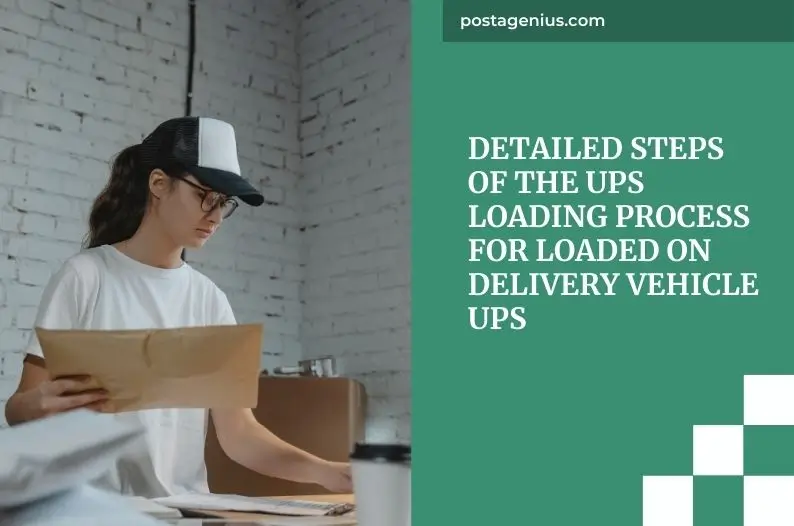
Sorting And Grouping
At UPS, sorting and grouping packages is a cornerstone of their efficiency strategy. Drawing from my time working in logistics, I’ve seen firsthand how this process can streamline the delivery system.
Automated sorting systems play a critical role here, ensuring that packages are meticulously organized and ready for delivery.
The use of advanced technology allows UPS to scan and sort packages based on destination, size, and weight quickly and accurately.
One of the most impressive aspects of UPS’s method is their package tracking capability. This crucial element enables both customers and employees to monitor the progress of their packages in real-time.
The accurate and up-to-date information provided about each package’s location allows UPS to effectively plan and prioritize their routes.
During my career, I’ve found that such real-time data not only boosts customer satisfaction but also helps in reducing the chances of delays significantly.
By sorting and grouping packages according to their destination and delivery route, UPS optimizes their delivery process.
This approach ensures timely deliveries, minimizes fuel consumption, and reduces the carbon footprint. From my experience, such strategies are pivotal in enhancing the efficiency of delivery vehicles.
The meticulous organization and advanced tracking systems allow UPS to manage their resources effectively, ensuring a smooth and efficient delivery experience.
Check This Out: Canada Post vs UPS
2. Scanning for Tracking
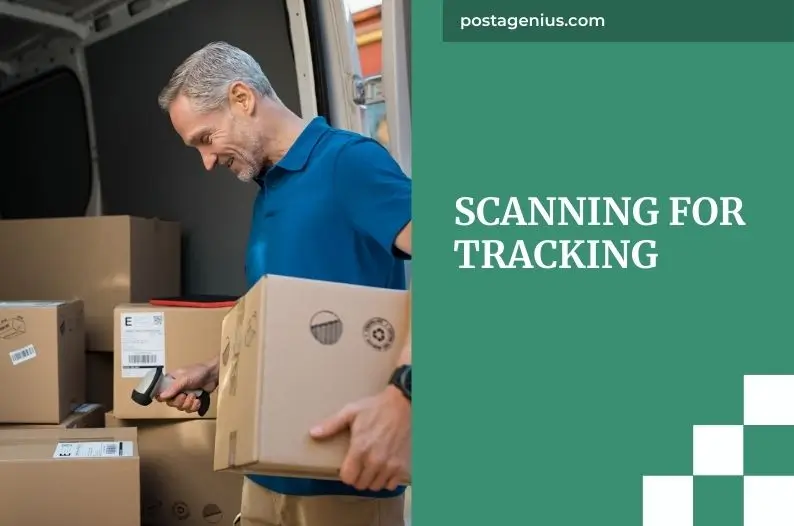
Throughout its journey, each package undergoes multiple scans.
Upon arrival at the distribution center, during sorting, before being loaded onto the delivery vehicle, and finally at the delivery point, each scan updates the package’s status in real-time.
This sophisticated tracking system allows both UPS employees and customers to monitor the package’s progress, ensuring transparency and up-to-date information about the package’s location and expected delivery time.
3. Loading onto Delivery Vehicles
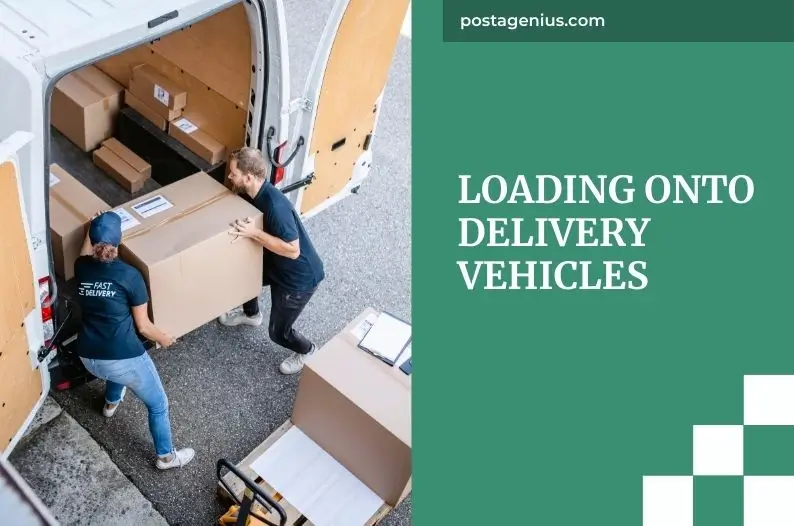
Once sorted, packages are ready to be loaded onto delivery vehicles. This step leverages automated loading systems that use robotics and advanced software to place packages onto vehicles with precision and speed.
The system ensures packages are loaded in a delivery sequence, meaning those to be delivered first are accessible and loaded last.
This load sequencing maximizes space within the vehicle and reduces the time spent unloading packages during deliveries, enhancing overall efficiency.
4. Integration of Intelligent Algorithms

To further optimize the loading process, UPS employs intelligent algorithms. These algorithms analyze the dimensions and delivery routes of the packages, determining the most optimal sequence for loading.
This ensures maximum space utilization and prevents packages from being damaged during transit.
By arranging packages strategically, the system minimizes the time required for loading and unloading, contributing to a more efficient delivery process.
5. Final Checks and Departure

Before the delivery vehicle sets off, final checks are conducted to ensure all packages are loaded correctly and securely.
This involves verifying the load order, ensuring that packages are properly fastened to prevent shifting during transit, and performing a final scan to confirm the vehicle’s cargo.
These meticulous checks are crucial in preventing errors and ensuring that packages are delivered safely and on time.
Read Also: Fedex Package Available For Clearance
Utilizing Technology for Streamlined Loading

By harnessing the power of technology, UPS can revolutionize the way packages are loaded onto delivery vehicles, making the process more efficient and seamless for everyone involved.
Reflecting on my experience in logistics, I’ve seen the transformative impact of automated loading systems. These systems use advanced robotics and software to sort and load packages with unmatched speed and precision.
Packages are scanned and sorted based on their size, weight, and destination, eliminating the need for manual sorting. This reduces errors and significantly improves overall efficiency.
Another notable advancement is the optimization of loading routes through GPS tracking and route optimization software.
This technology allows drivers to determine the most efficient order to load packages, ensuring those headed to the same area are grouped together.
This method cuts down on multiple trips and minimizes travel time. From my professional perspective, such optimized routes save both time and fuel, enhancing productivity and reducing operational costs.
By incorporating automated loading systems and optimizing loading routes through technology, UPS not only improves the efficiency and effectiveness of package loading but also benefits the company and its employees.
This approach elevates the customer experience, ensuring timely and accurate deliveries. The seamless integration of these technologies represents a significant leap forward in the logistics industry.
Maximizing Space and Capacity on Delivery Vehicles
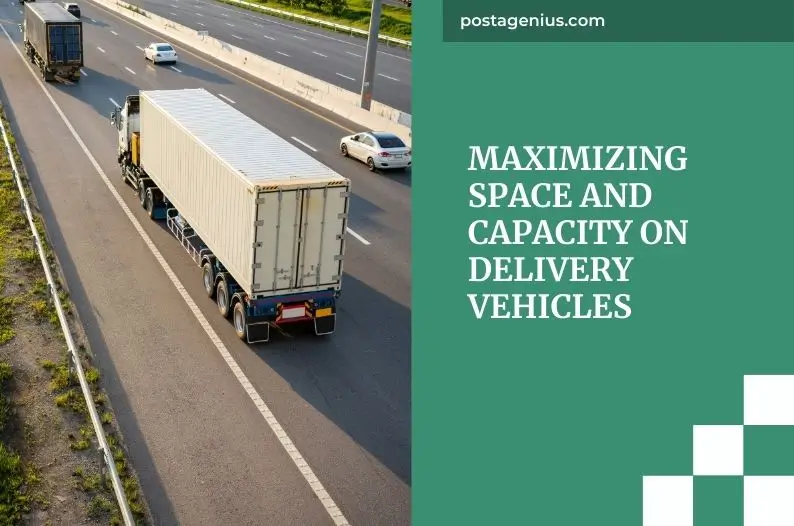
To make the most of your truck’s space and capacity, strategically arranging packages based on their size and weight is essential.
Utilizing automated loading systems can greatly assist in this process, as they accurately determine the best placement for each package to optimize space utilization.
These systems consider not only the dimensions of the packages but also their weights, ensuring that heavier items are placed at the bottom to prevent damage or instability during transit.
Another way to maximize space and capacity is by optimizing loading routes. By carefully planning the order in which packages are loaded onto the truck, you can minimize the time and effort required to load and unload the vehicle.
This can be achieved by grouping together packages that are being delivered to the same area or by arranging them in a way that allows for efficient access and retrieval.
Reflecting on my experiences, I’ve seen how well-planned routes significantly enhance overall delivery efficiency.
By implementing these strategies, you can significantly increase the efficiency and productivity of your delivery operations.
Maximizing space and capacity on your delivery vehicles not only allows for more packages to be transported at once but also reduces the risk of damage to the goods being transported.
With automated loading systems and optimized loading routes, you can streamline the loading process and ensure that your delivery truck is operating at its maximum potential.
Ensuring Safety and Security of Packages During Loading
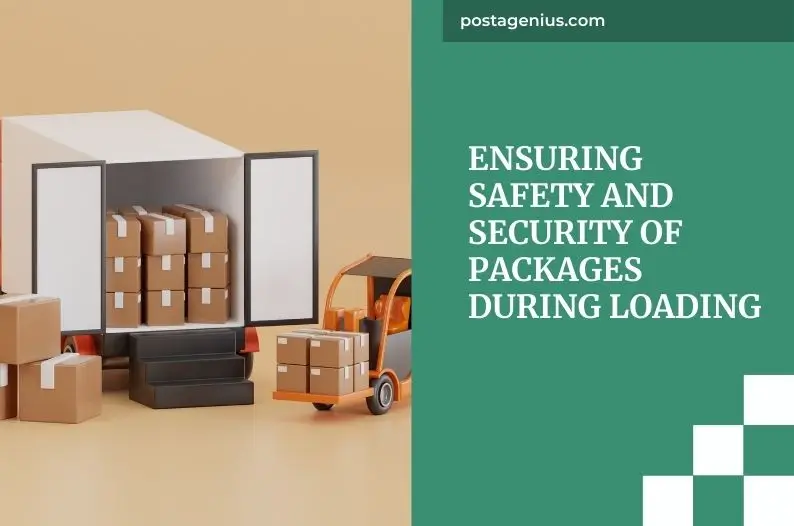
During the loading process, it’s crucial to securely fasten packages to prevent any potential damage or shifting during transit.
My experience has taught me that optimization of this process is key to ensuring the safety and security of packages on delivery vehicles. To maximize space and capacity, it’s important to use efficient handling techniques.
One effective technique is to organize packages based on size and weight. By placing larger and heavier packages at the bottom and lighter ones on top, you can prevent them from crushing or damaging each other.
Additionally, using dividers or straps can help secure packages in place and prevent them from shifting during transport. Proper stacking of packages is also essential.
By stacking them in a stable and balanced manner, you can prevent them from falling or tipping over.
This can be achieved by using stackable bins or containers and ensuring that each stack is not too high or unstable.
Furthermore, it’s essential to train employees on proper package handling techniques. This includes teaching them how to lift and carry packages safely to avoid injuries and damages.
Providing them with the necessary equipment, such as dollies or carts, can also make the loading process more efficient and reduce the risk of accidents.
By implementing these strategies, you can significantly minimize the risk of damage or shifting during loading and transportation.
Ensuring that packages are securely fastened, organized by size and weight, and handled properly by trained employees is vital for maintaining the safety and security of goods during transit.
Check This Out: Shipment Ready for UPS
Training and Best Practices for Loading Efficiency

Training employees on proper package handling techniques is essential for maximizing loading efficiency and ensuring the safe transportation of packages.
From my experience, implementing ergonomic lifting methods, such as using their legs instead of their backs, helps employees minimize the risk of injury and improve overall efficiency.
Providing the right equipment, like hand trucks or forklifts, further enhances their ability to handle heavy packages safely and effectively.
Incorporating time management strategies is another crucial aspect of loading efficiency. Employees should be trained to prioritize packages based on their destination or delivery deadlines.
This ensures that time-sensitive packages are loaded first, thereby reducing the risk of delays.
Additionally, teaching employees to organize packages in the delivery vehicle in a manner that minimizes the need for reorganizing during the delivery process can significantly save time and improve overall efficiency.
Conducting regular training sessions reinforces these techniques and provides opportunities for employees to ask questions and seek clarification.
Investing in proper training and providing the necessary tools and knowledge ensures loading efficiency is maximized, leading to improved customer satisfaction and a more streamlined delivery process.
Continuous Improvement and Innovation in Loading Processes
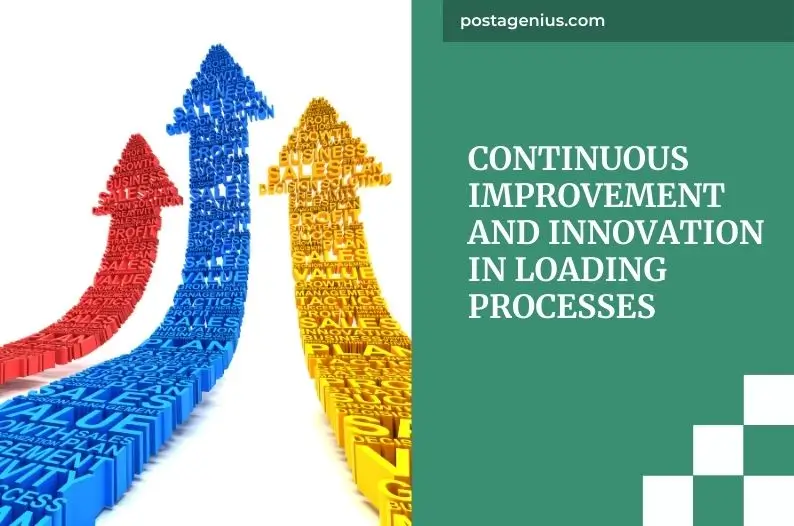
Now that we’ve covered training and best practices for loading efficiency, let’s explore the exciting realm of continuous improvement and innovation in loading processes.
One significant advancement in this area is the implementation of automated systems. These cutting-edge systems utilize advanced technology to streamline the loading process, resulting in increased efficiency and reduced loading times.
With automated loading systems, packages are sorted and loaded onto the delivery vehicle with precision and speed, eliminating the need for manual handling and reducing the risk of errors or accidents.
The integration of intelligent algorithms ensures that packages are loaded in the most optimal sequence, maximizing space utilization and minimizing the time required for loading.
From my experience, embracing these innovative solutions enables UPS to enhance its operations and deliver packages to customers more timely and efficiently.
As technology continues to evolve, UPS remains committed to finding new ways to optimize loading times and improve the overall delivery experience.
By adopting these advancements, UPS not only boosts efficiency but also ensures precision in loading processes.
This commitment to continuous improvement and innovation reflects a forward-thinking approach that benefits both the company and its customers.
As someone deeply involved in logistics, I’ve witnessed firsthand the transformative power of such technologies in revolutionizing loading operations.
Key Takeaways
- Loaded on Delivery Vehicle means your UPS package is securely placed in a delivery truck and is on its way to you, ensuring it arrives safely and on time.
- Sorting and Grouping Packages for Efficiency involves using advanced automated systems to organize and track packages, optimizing delivery routes and minimizing delays.
- Utilizing Technology for Streamlined Loading highlights the use of robotics and GPS to automate and optimize the loading process, enhancing efficiency and reducing errors.
- Ensuring Safety and Security of Packages During Loading focuses on proper techniques and training to prevent damage and ensure secure transportation.
- Training and Best Practices for Loading Efficiency emphasizes the importance of ergonomic lifting methods, time management strategies, and regular training sessions for employees.
- Continuous Improvement and Innovation in Loading Processes showcases the adoption of cutting-edge technologies and intelligent algorithms to further optimize loading operations and improve customer satisfaction.
By gaining a clear understanding of the “Loaded on Delivery Vehicle” status, you can better appreciate the efficiency and precision of the UPS loading process.
This knowledge not only reassures you about the safety of your package but also highlights the advanced logistics solutions UPS employs to meet customer expectations.
Frequently Asked Questions
What does “Loaded on Delivery Vehicle” mean?
“Loaded on Delivery Vehicle” means your UPS package has been placed onto the delivery truck and is on its way to you.
This status indicates that the package is in the final stage of its journey and should be delivered soon.
How long does it take for a package to arrive after it is “Loaded on Delivery Vehicle”?
Once your package is marked as “Loaded on Delivery Vehicle,” it typically arrives the same day. However, delivery times can vary depending on the local delivery schedule, traffic, or weather conditions.
Can I track the delivery truck in real-time?
While UPS provides real-time updates on the package status, real-time tracking of the delivery truck itself is not widely available. You can check the most recent status updates through the UPS website or app.
What should I do if my package says “Delivered” but I haven’t received it?
If your package status is “Delivered” but you haven’t received it, first check the tracking details for any notes about where it was left.
If you still can’t find it, contact UPS customer service for assistance. They can help locate your package or provide further instructions.
Can I pick up my package if it’s marked as “Loaded on Delivery Vehicle”?
Generally, once a package is marked as “Loaded on Delivery Vehicle,” it cannot be picked up from the local UPS facility as it is already on its way to the delivery address.
If you need to intercept the package, you might need to contact UPS customer service for options.


